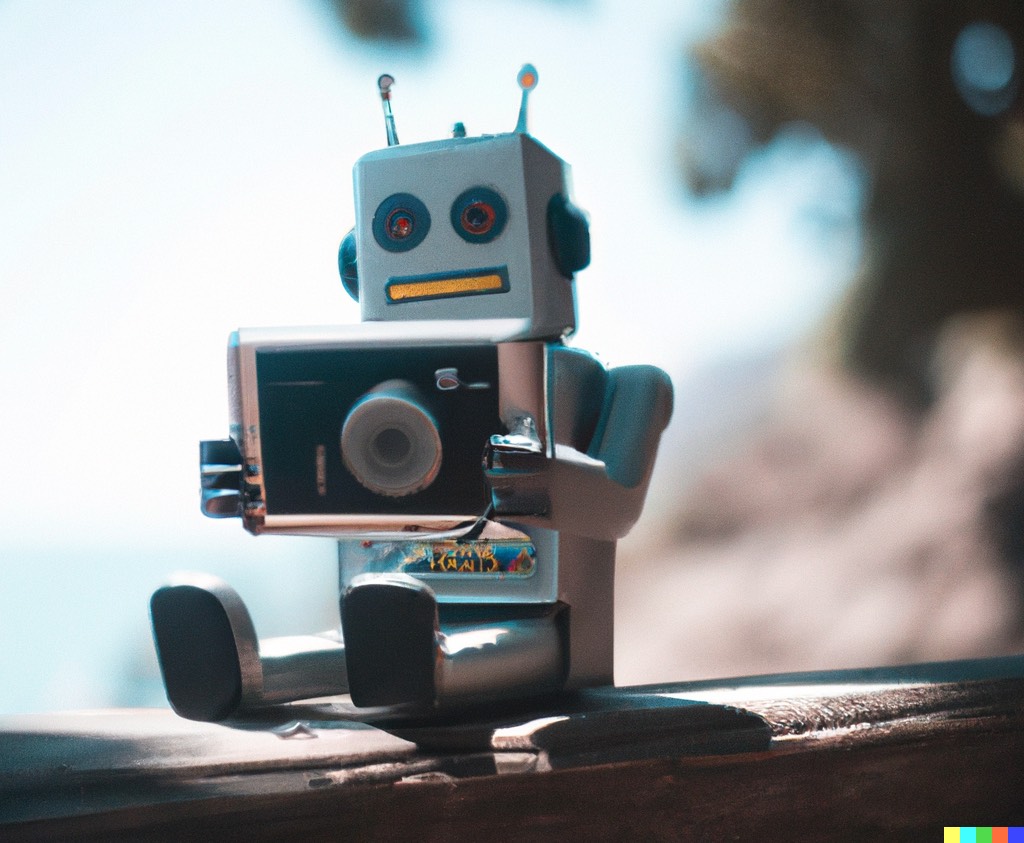If you’re trying to generate photo-style images with DALL•E 2, it helps to use the right words to get the photographic vibe you’re looking for!
In this article, we’ll look at some of the descriptive photography terms you can use to get DALL•E shooting photos, your way.
Photo style prompts for DALL•E
1. Autochrome
Early colour photography process used between 1900 and 1930: greens and pinks tend to pop, while oranges and blues are often faded.



2. Surveillance & CCTV
Not DALL-E’s favourite genre, but try terms like CCTV, security, footage, recording, dashcam, surveillance, grainy, black-and-white to create ‘evidential’ images. It was the grizzly what dun it, guv’nor! (For narrative purposes only, of course!)



3. Daguerrotype
The first publicly available photographic process, widely used during the 1840s and 1850s.



4. Disposable camera
Creates lower-quality, oddly-composed photos: often provides film grain, vignette effects, camera flash and amateur framing. Fun!



5. Double exposure
Combine two images for an artistic effect! Very James Bond. Try merging a colourful or vibrant background or texture with readily-recognisable silhouettes.



6. Drone photography
Views from above. Related: aerial view, view from above, birds-eye-view.


7. Fashion photography
Prompt for ‘editorial fashion photography’ as well as specific outfits and settings; try ‘masked’ or ‘viewed from behind’ to avoid faces, name specific fashion photographers, or source prompts like ‘from Vogue magazine’ or ‘from ad campaign.’



8. Fish-eye lens
Dramatic, ultra-wide-angle photography, often used for dramatic portraits that ‘zoom in’ on the subject, or to fit in a huge field of view (e.g: to show the maximum amount of an interior, or a landscape).



9. Flash, harsh flash
Makes photos look edgy and authentic, especially in non-studio settings. Noticeable flash use is not usually associated with high-quality imagery, so photos look more like a ‘real person’ took them. In photo portraits or studio settings, creates a dramatic, ‘in-the-spotlight’ feel.



Est repellendus eius accusantium vel nihil esse. Perspiciatis fugit rerum aut est quia.
10. Lomography
A colourful, vibrant photography approach using experimental films and analogue cameras; expect light leaks, film grain and hot, ‘filter-y’ scenes.



11. Long exposure, slow shutter speed
This prompt causes moving elements to be blurred, creates a dreamy and impressionistic feeling. It’s a good to make a photo feel ‘realistic’ while also keeping avoiding recognisable detail, like faces (DALL-E often struggles getting the details right when it needs to draw a lot of figures accurately.)



12. Macro photography
Photography using a lens designed for extreme close-ups – it’s typically associated with very small subject matter, with only a narrow part of the image in focus.


13. Polaroid
Classic instant photography format, often with bright flash, shadows, soft focus and film grain. Even better – it’s naturally square!

14. Pinhole photography, camera obscura
An extremely primitive photography format for low-focus, historic-looking images.


15. Telephoto lens
Often used to capture a subject from a long distance away, for instance during surveillance, paparazzi-like contexts or nature photography. Creates a vaguely voyeuristic feel, even when the subject is framed in close-up.











